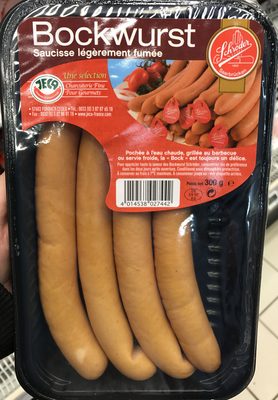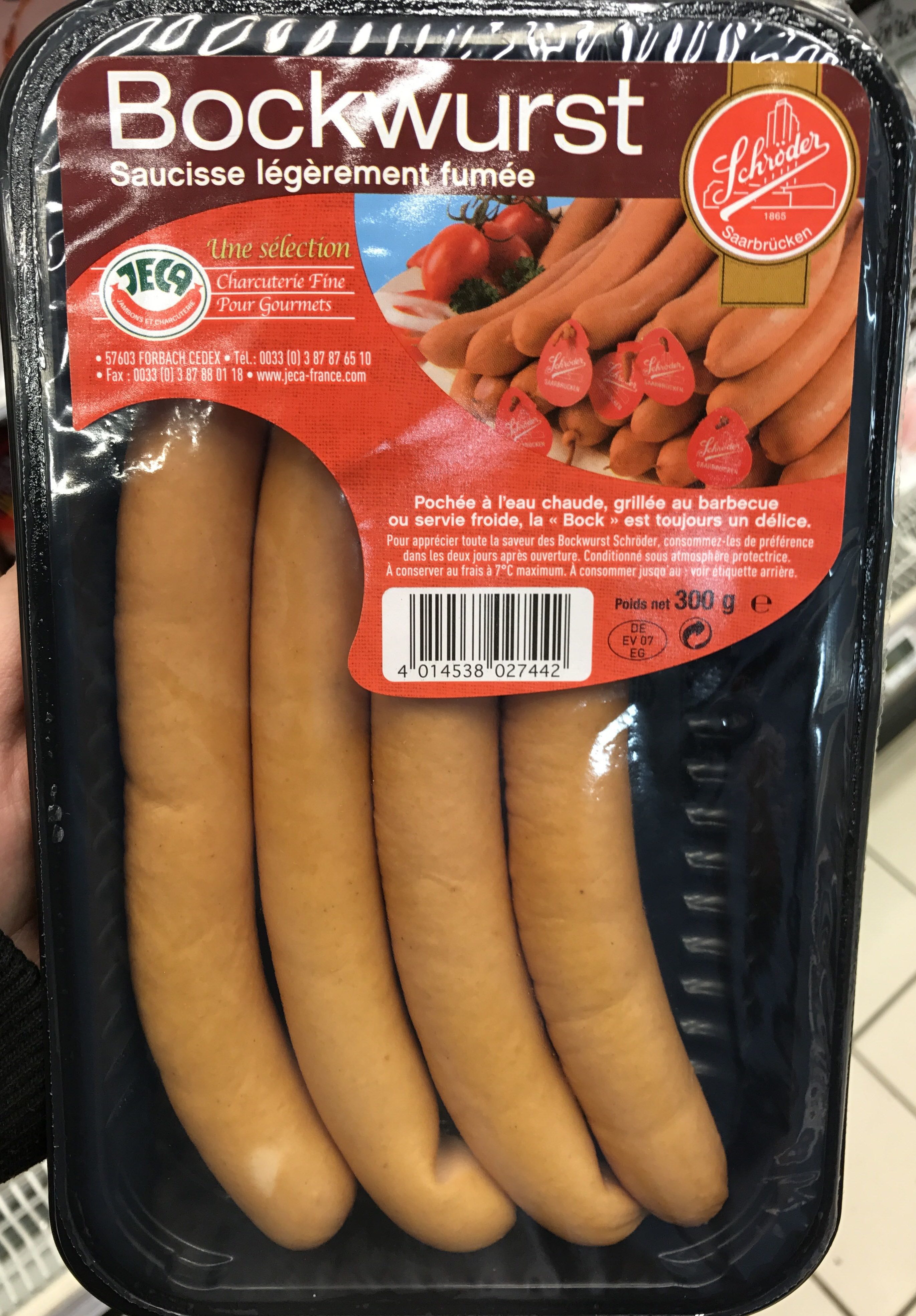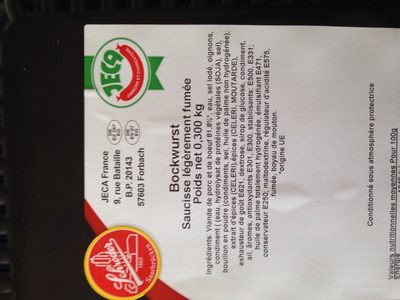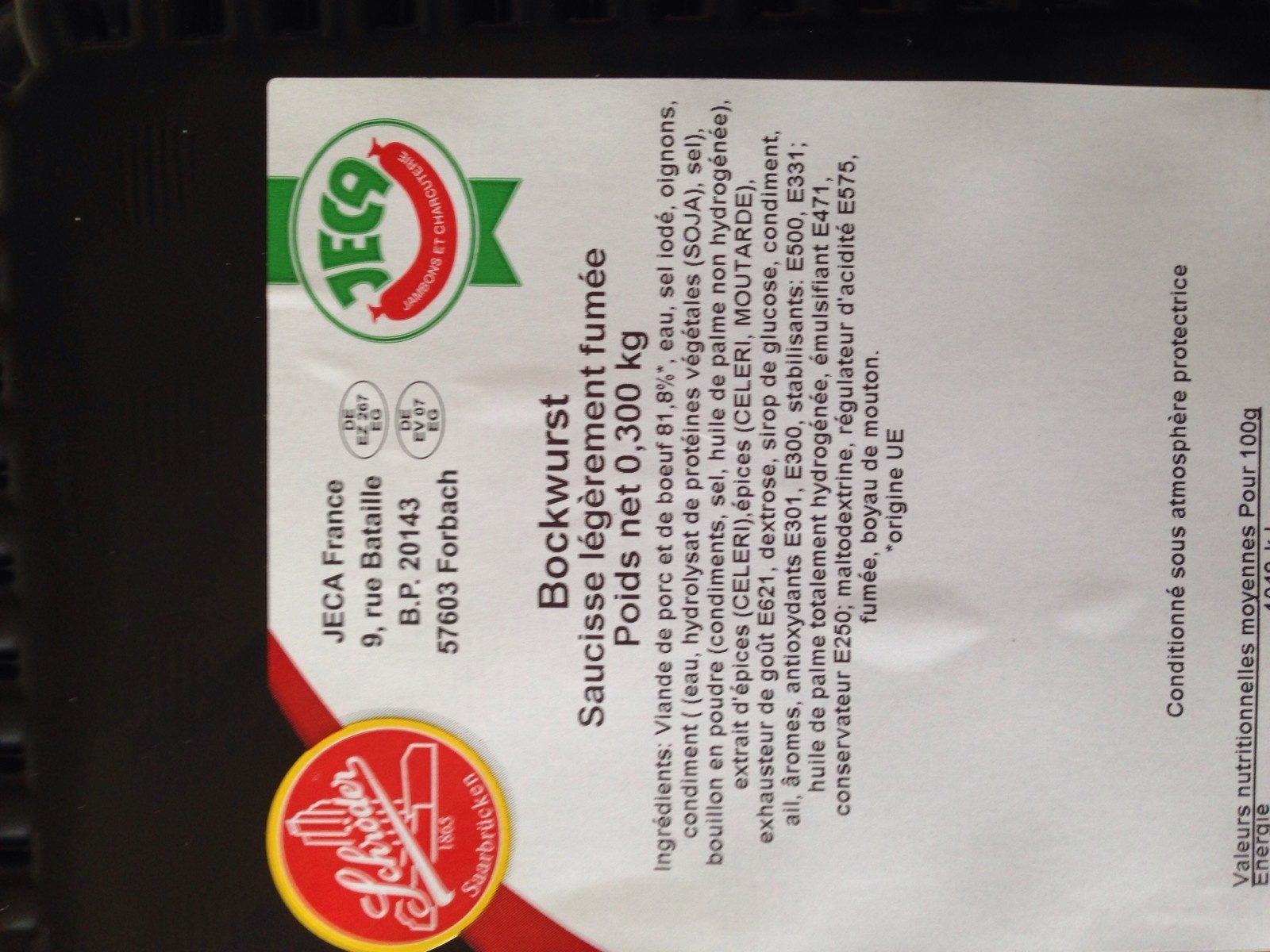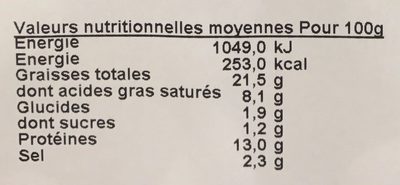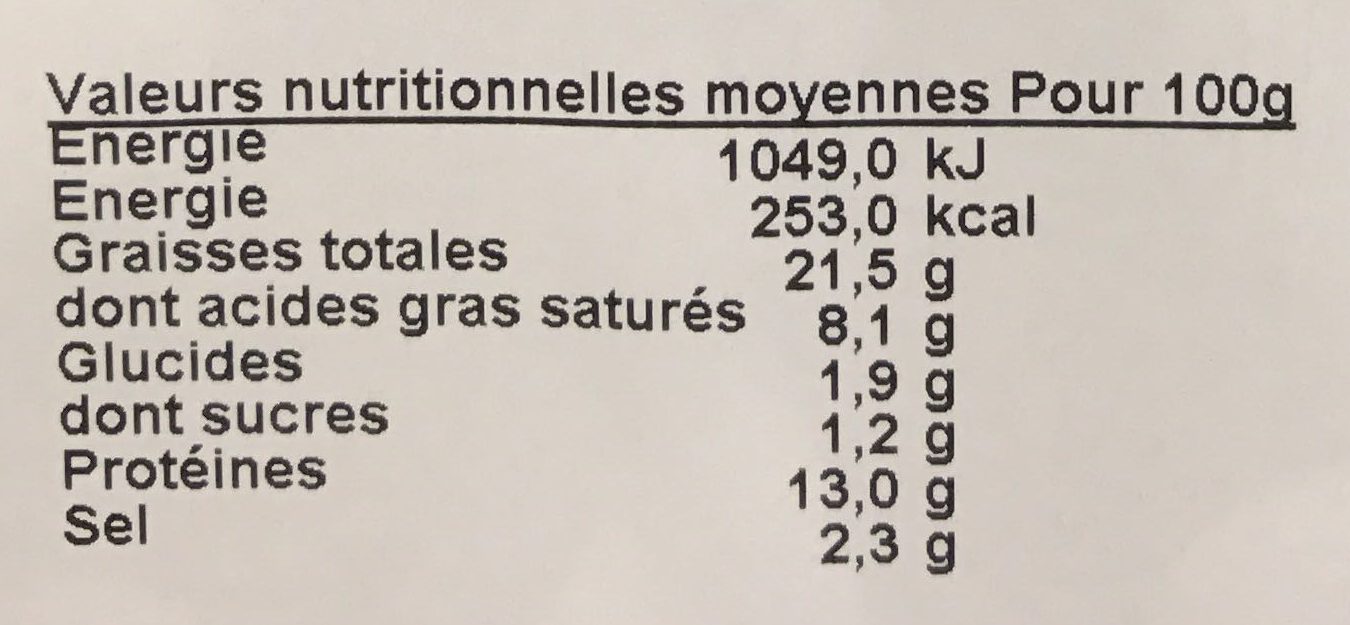Bockwurst saucisse légèrement fumée - Schroder - 0,300 kg
This product page is not complete. You can help to complete it by editing it and adding more data from the photos we have, or by taking more photos using the app for Android or iPhone/iPad. Thank you!
×
Barcode: 4014538027442 (EAN / EAN-13)
Quantity: 0,300 kg
Categories: Meats and their products, Meats, Prepared meats, Sausages, Smoked sausages
Origin of ingredients: European Union
Manufacturing or processing places: Allemagne
Traceability code: DE EZ 267 EG, DE EV 07 EG
Countries where sold: France
Matching with your preferences
Environment
Packaging
Transportation
Threatened species
Report a problem
Data sources
Product added on by laminche
Last edit of product page on by roboto-app.
Product page also edited by kiliweb, openfoodfacts-contributors, packbot, sebleouf, tacite, yuka.UllNNEV2ME9uOWMwc3RzaTlRM2Y1UGQ4NlpUMEJrTzJLT3BQSUE9PQ.
If the data is incomplete or incorrect, you can complete or correct it by editing this page.
